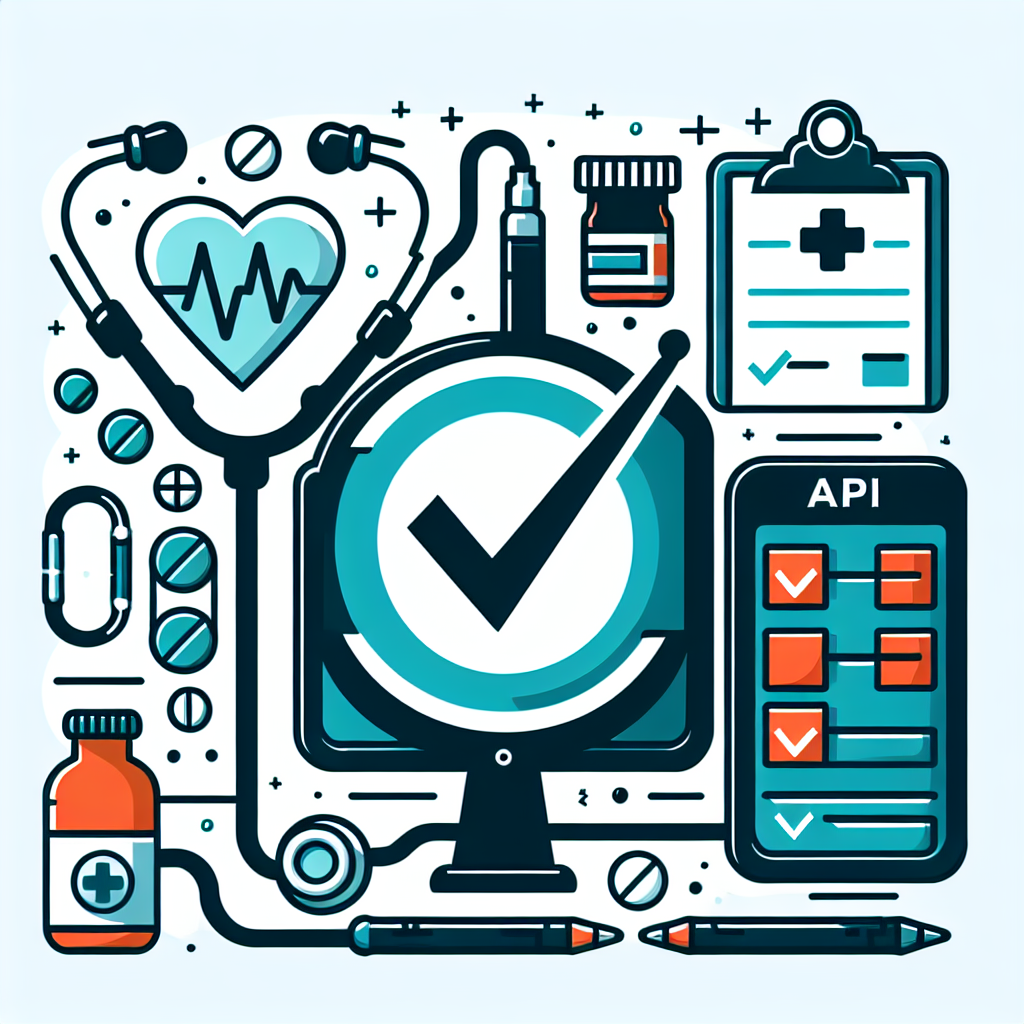Filed under Health Insurance on
Streamlining Health Insurance Verification with API

In the healthcare industry, time is critical, and efficiency can significantly impact patient outcomes. One area where this efficiency is often lacking is in health insurance verification. Traditional methods of verifying health insurance can be cumbersome and prone to errors, leading to delays in patient care and frustration for both healthcare providers and patients. Fortunately, the integration of Application Programming Interfaces (APIs) is revolutionizing this process, making health insurance verification faster, more accurate, and streamlined.
Understanding Health Insurance Verification
Health insurance verification is the process of confirming a patient's insurance coverage and benefits before services are rendered. This step is crucial for ensuring that healthcare providers will be reimbursed by insurers for their services, and it helps prevent unexpected out-of-pocket expenses for patients. However, traditional verification methods involve phone calls, fax machines, and manually filling out forms, which are not only time-consuming but also prone to human error.
The Role of APIs in Health Insurance Verification
APIs play a critical role in transforming health insurance verification by creating a seamless connection between healthcare providers, insurance companies, and patients. An API is essentially a set of rules that enables different software applications to communicate with each other. By connecting healthcare providers' systems with insurers' databases, APIs allow for real-time verification of a patient’s insurance information.
Benefits of Using APIs for Health Insurance Verification
- Increased Speed and Efficiency: APIs can instantly retrieve and verify insurance information, reducing the time spent on verification from hours or days to just seconds.
- Accuracy and Reliability: Automated processes minimize human errors common in manual verification methods.
- Cost Savings: By reducing errors and cutting verification times, APIs help healthcare providers save on labor costs associated with manual verifications.
- Improved Patient Experience: Faster verification means patients spend less time waiting for healthcare services, enhancing overall satisfaction.
Real-Life Example: A Clinic's Transformation with API Integration
Consider the case of BrightCare Clinic, a multi-specialty healthcare provider located in Michigan. Before integrating API technology into their operations, the clinic struggled with lengthy verification times, often resulting in delayed treatments and unhappy patients. The administrative staff spent hours each day making phone calls to insurance companies to confirm patient coverage.
Seeking a solution, BrightCare Clinic adopted an API-based verification system that directly connects with numerous insurance providers. The result was transformative. Verification times dropped from an average of 45 minutes per patient to under 2 minutes. Additionally, the error rate decreased significantly, saving the clinic thousands of dollars in denied claims and re-submissions.
Implementing APIs: What to Consider
Adopting APIs for health insurance verification can be straightforward, but it requires thoughtful planning and execution. Here are some considerations to ensure successful integration:
Compatibility
Healthcare providers must ensure that the APIs they plan to use are compatible with their existing software systems. Compatibility issues can lead to delays and increased costs, so it's critical to perform thorough testing before implementation.
Data Security and Compliance
Since health insurance verification involves sensitive patient data, ensuring data security is paramount. Providers must only use APIs that comply with regulations such as the Health Insurance Portability and Accountability Act (HIPAA) to safeguard patient information.
Vendor Reliability
Choosing a reliable API provider is key for long-term success. Research potential vendors, read client testimonials, and assess their support services to ensure they can meet your clinic’s needs efficiently and reliably.
Staff Training
Successful implementation of API technology requires training staff to use the new systems effectively. Conducting workshops and ongoing training sessions ensure that the administrative staff fully understands the features and benefits of APIs.
API Integration: Challenges and Solutions
While APIs offer numerous advantages, healthcare providers may face certain challenges during implementation:
- Technical Challenges: Establish a clear timeline and a dedicated team to oversee integration. Consider seeking help from IT experts with healthcare experience to avoid common pitfalls.
- Resistance to Change: To tackle resistance, engage staff early in the process, highlighting the benefits and incorporating their feedback to make tailored improvements.
- Ongoing Maintenance: Regularly update API systems and perform routine maintenance checks to ensure smooth operations and compatibility with evolving technologies.
Future Trends in Health Insurance Verification
The healthcare industry is rapidly evolving, and APIs are at the forefront of this transformation. Future trends that may influence health insurance verification include:
Artificial Intelligence (AI) and Machine Learning
AI algorithms, when combined with APIs, can enhance the verification process by predicting coverage outcomes based on previous patterns, thereby improving accuracy and efficiency.
Blockchain Technology
Blockchain promises to offer secure, transparent, and decentralized ways to store and share patient data, making health insurance verification even more trustworthy and foolproof.
Interoperability
As the demand for seamless healthcare experiences grows, there is a strong push towards achieving total interoperability between different systems and providers. APIs will continue to play a crucial role in this ecosystem.
Conclusion
Streamlining health insurance verification with API technology is transforming the healthcare industry, improving efficiency, accuracy, and the overall patient experience. By embracing this technology, healthcare providers can free up valuable resources, enhance patient satisfaction, and ensure that they are well-positioned in a competitive healthcare landscape. As technology continues to evolve, the potential for APIs to further enhance healthcare operations is boundless.
Frequently Asked Questions
- What are the main benefits of using APIs for health insurance verification?
APIs increase speed and efficiency in verification processes, improve data accuracy, reduce administrative costs, and enhance patient satisfaction by minimizing wait times for service.
- How can APIs improve data security during the verification process?
By complying with regulations like HIPAA, APIs ensure that patient data is securely transmitted and accessed only by authorized parties, minimizing the risk of data breaches.
- What challenges might healthcare providers face when implementing APIs?
Common challenges include technical hurdles, resistance from staff, and the need for ongoing maintenance. Addressing these through planning, training, and choosing reliable vendors can mitigate such issues.
- Can small clinics benefit from API integration for insurance verification?
Yes, even small clinics can benefit significantly from APIs. By streamlining processes and reducing manual work, APIs can save time and money, allowing clinics to focus more on patient care.
- What future technologies could impact API-based health insurance verification?
Technologies like AI, machine learning, blockchain, and increased interoperability are poised to further enhance the capabilities and efficiency of API-driven systems.





